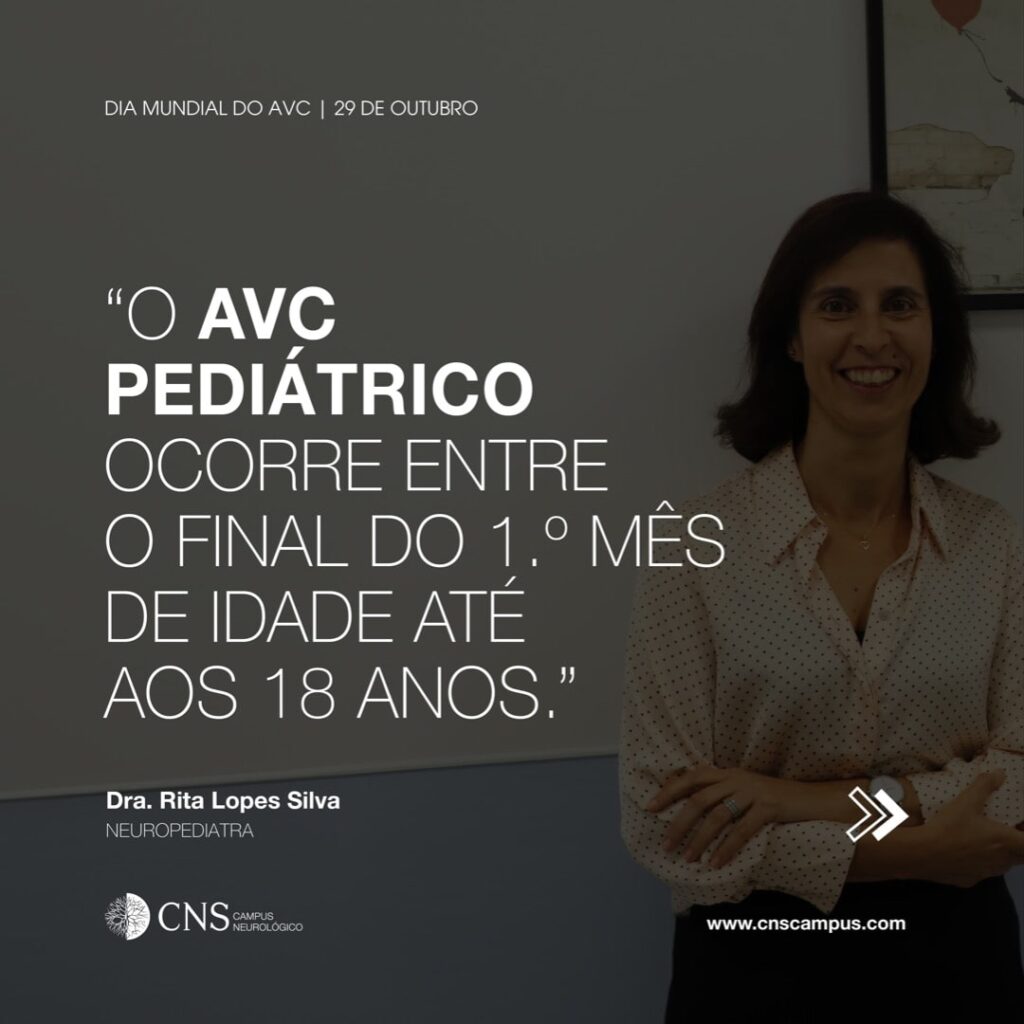Stroke in the pediatric age group (from the end of the 1st month of life to 18 years old) has a lower incidence than in adults, with 1.2 to 13 strokes occurring per 100,000 children/adolescents each year. Stroke can occur even earlier, during pregnancy or after birth, being more frequent in the first month of life.
As in adults, there are two types of stroke in pediatric cases: ischemic and hemorrhagic. In the pediatric age group, the causes of ischemic stroke differ from adults, with about half of the children having a known disease. The most frequent causes include diseases of the artery walls due to infections, inflammations, genetic or metabolic diseases, heart diseases, and blood diseases (hematological), such as sickle cell disease.
The most common clinical presentation is hemiparesis (weakness on one side of the body), but it can also present as motor asymmetry of the limbs detected by family members or healthcare professionals in the first months of life. Other manifestations can include epileptic seizures, altered consciousness, severe headache, vomiting, visual changes, facial asymmetry, gait imbalance, or language alteration. Similar to what happens in adults, when there’s a sudden onset of any of the 3Fs (difficulty speaking, facial changes, or arm/leg weakness), the possibility of a stroke should be considered. Calling 112 activates the “Green Pathway,” allowing faster access to acute-phase treatments that minimize brain damage and improve prognosis. Worldwide, there’s still a significant delay between the onset of pediatric stroke and its diagnosis, often due to unrecognized initial symptoms by families and healthcare professionals or these symptoms being attributed to more common conditions at this age (migraine, epilepsy, or infections).
Children and adolescents generally have a better and faster recovery due to brain plasticity. However, mortality can occur in 10-25% of cases, and motor, cognitive (learning difficulties), behavioral, and emotional sequelae are present in 40 to 60% of patients.
In the multidisciplinary team caring for these patients, besides Neurology, Rehabilitation plays a crucial role from the acute phase after clinical stabilization to the treatment of neurological sequelae affecting daily life. Physiatrists, physiotherapists, occupational therapists, speech therapists, and psychologists, together with the child/adolescent and family, develop a personalized rehabilitation plan based on neurological deficits, age, study schedule, and leisure time. Whenever possible, parents and caregivers are empowered, and the main goals include promoting autonomy and functionality to allow a quality life from a family, academic, and social perspective.
Rita Lopes da Silva
Neuropediatrician
CNS – Campus Neurológico
